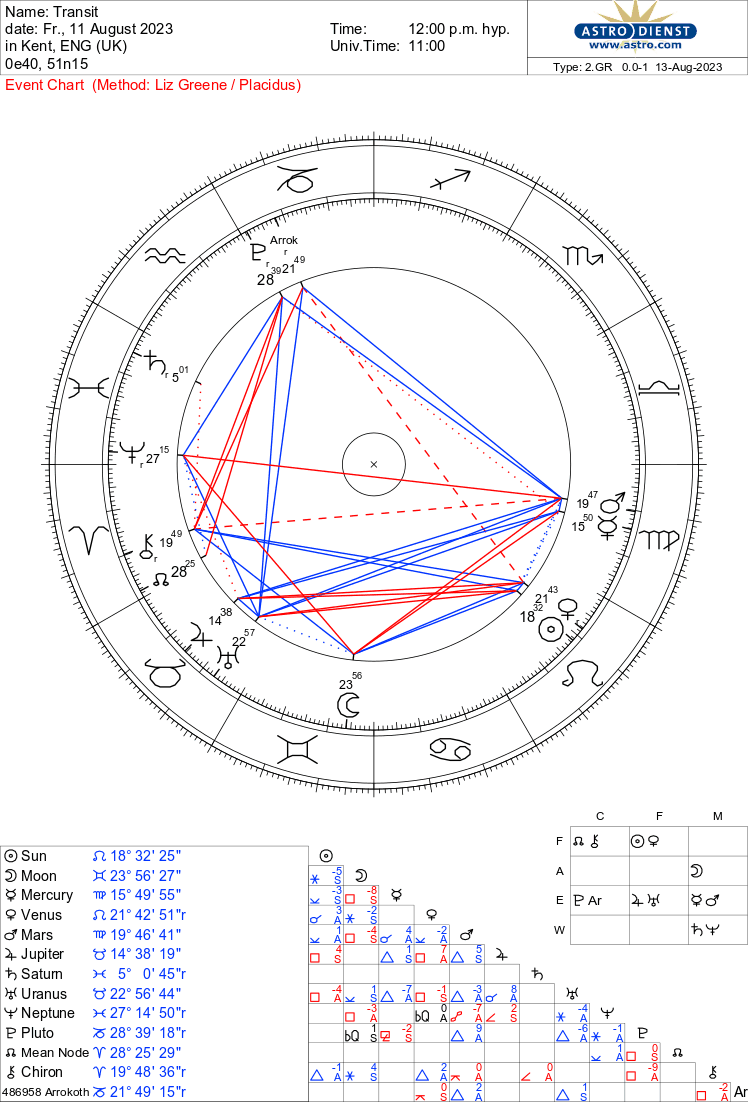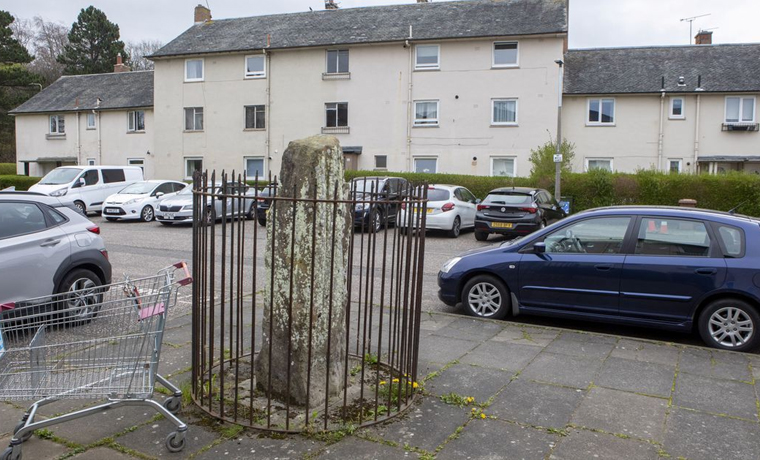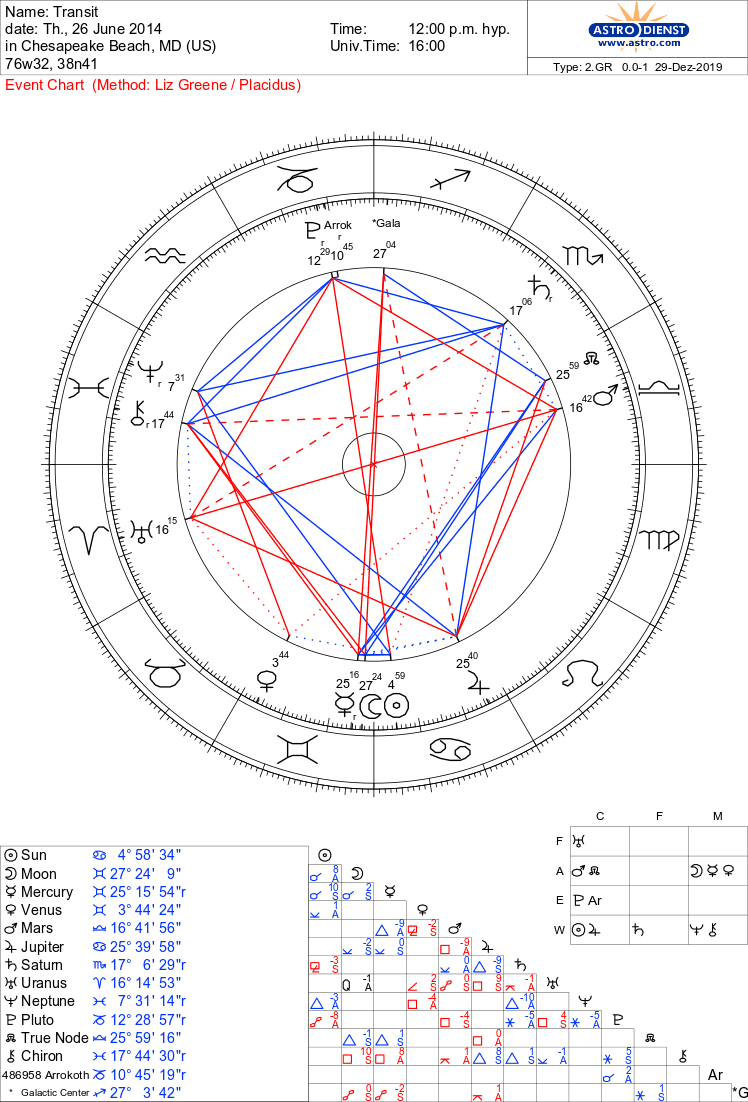Arrokoth
486958 Arrokoth is a trans-Neptunian object located in the Kuiper belt. Arrokoth was discovered on 26 June 2014 and named for a word in the Powhatan language of the Tidewater region of Virginia and Maryland in the eastern United States. The Powhatan language became extinct in the late 18th century and little was recorded of it. In an old word list, arrokoth is glossed as 'sky', but it would seem that it actually meant 'cloud'.
The mysterious Long Meg and her Daughters is one of the largest stone circles in England. Credit Alamy
As a totem pole in Kent joins the UK's list of mystery sites, explore the country's love of unexplained relics, from Stonehenge to Loch Ness.
Venus (attraction) quincunx Arrokoth (rituals that honor the sky).
Robin Dunbar, Professor of Evolutionary Psychology at the University of Oxford, explains why we are so drawn to the unknown.
"Basically, we seem to be prone to believing in things that we cannot explain, so long as they are not too implausible, i.e. break only some but not all the laws of physics," he says.
Stonehenge's forgotten cousin 'of national importance' hidden on housing estate. The megalith described as an "icon of prehistoric ritual" sits next to a block of flats in a cul-de-sac
Stonehenge in Wiltshire is famous as one of the world's most precious ancient monuments - a stone circle built thousands of years ago with a meaning yet to be fully understood by scholars. But the prehistoric site has a forgotten cousin that sits hundreds of miles away on a housing estate at the opposite end of the UK.
Jupiter (ritual) square Arrokoth (rituals that honor the sky (The monument is of national importance as an icon of prehistoric ritual, albeit in a modern urban setting)).
Originally built in the Neolithic period the stone was erected around 4,000 years ago, predating the Great Pyramid of Djoser which was the first in Egypt. But the single megalith can now be found next to a block of flats in a cul-de-sac on Ravenswood Avenue, Edinburgh.
The grey sandstone is nearly 7ft tall and is caged in by railings to protect it from vandals. Illustrations from the 19th century show the megalith standing alone in fields near Edinburgh.
Secret Australian marijuana facility exposes location after turning sky pink. Photo: Stuff
A mysterious pink glow illuminated the sky above the Australian town of Mildura on Wednesday evening, leaving residents wondering if they were witnessing an alien invasion, misplaced northern lights or some sort of solar flare.
Uranus (bizzare ("very bizarre, this huge pink light in the sky")) bi-quintile Varda (rose color, pink (hot pink light)). Ceres (gardening, growing, herbs, horticulture, plants (medicinal cannabis facility)) trine Borasisi (open-minded (alien invasion, misplaced northern lights or some sort of solar flare)). Psyche (brain states (trying not to freak out)) trine Arrokoth (sky (mysterious pink glow illuminated the sky)).
Local resident Tammy Szumowski and her family thought the world might be coming to an end.
"I was just like 'what the hell is that?' It is very bizarre, this huge pink light in the sky," she said. "I'm trying not to freak out because I've got my girls in the car."
Discovery
2014 MU69/486958 Arrokoth (initially called "PT1" and "1110113Y" by the New Horizons and Hubble teams, respectively) is a classical Kuiper belt object. It is the target for the New Horizons probe for a flyby on 1 January 2019, after its Pluto flyby. It was selected as New Horizons' target in August 2015. After four course changes in October and November 2015, New Horizons is on course toward 2014 MU69.
On 26 June 2014, 2014 MU69 was discovered using the Hubble Space Telescope during a preliminary survey to find a suitable Kuiper belt object for the New Horizons probe to fly by. The discovery required the use of the Hubble Space Telescope, because with an apparent magnitude of nearly 27 it is too faint for all but the most powerful telescopes. The Hubble Space Telescope is also capable of very precise astrometry and hence a reliable orbit determination.
When 2014 MU69 was first observed, it was labelled 1110113Y, and nicknamed "11", for short. Its existence as a potential target of the New Horizons probe was announced by NASA in October 2014 and it was unofficially designated PT1 ("Potential Target 1"). Its official designation, 2014 MU69, was assigned by the Minor Planet Center (MPC) in March 2015 after sufficient orbital information was gathered. After further observations pinning down its orbit, it was officially given the permanent minor planet number 486958 in MPC 103886 on 12 March 2017.
The name 2014 MU69 is a provisional designation and indicates that it was the 1745th object (("U" = 20) + ("69" x 25)) discovered between 16 and 30 June 2014 ("2014", "M"). A proper name for the object will be selected in due course.
Arrokoth was named for a word glossed as "sky", from the Powhatan language of the Tidewater region of Virginia and Maryland. The pronunciation and meaning of the word, however, are not entirely certain, as the language became extinct in the late 18th century and little was recorded of it. The only record of the word was collected in 1610-1611 by English writer William Strachey, who had a decent ear but bad handwriting, and scholars since have had considerable difficulty reading his notes. The meanings of the words are also often uncertain, as Strachey and the Powhatan had no language in common.






